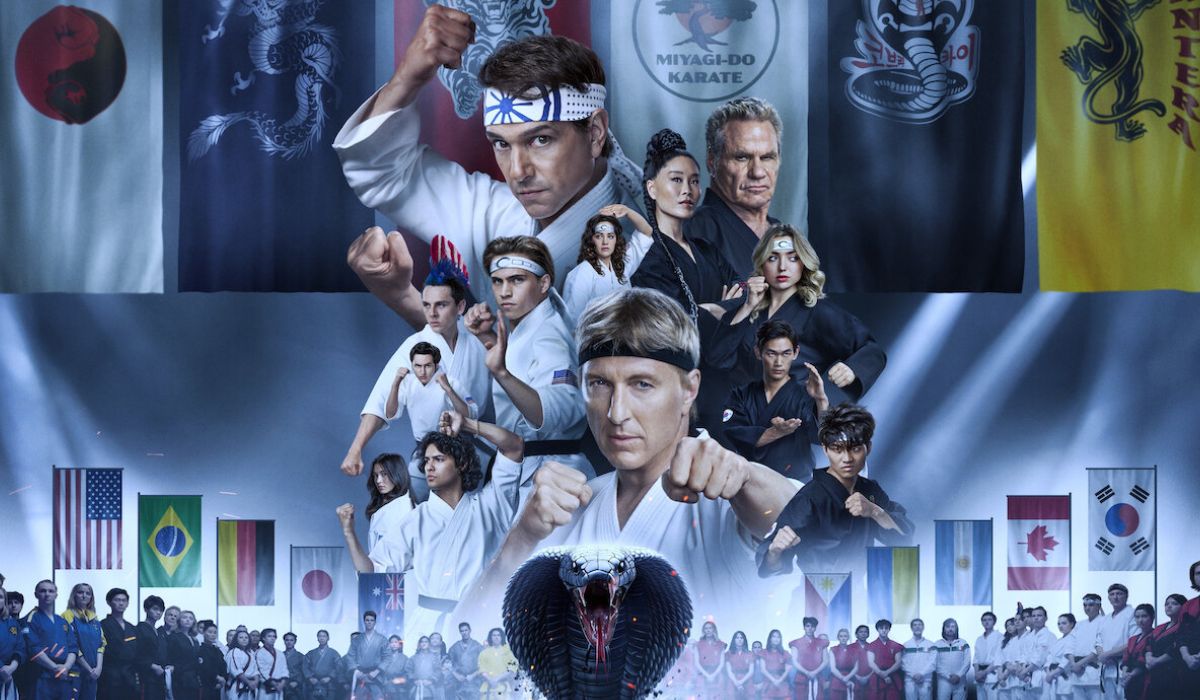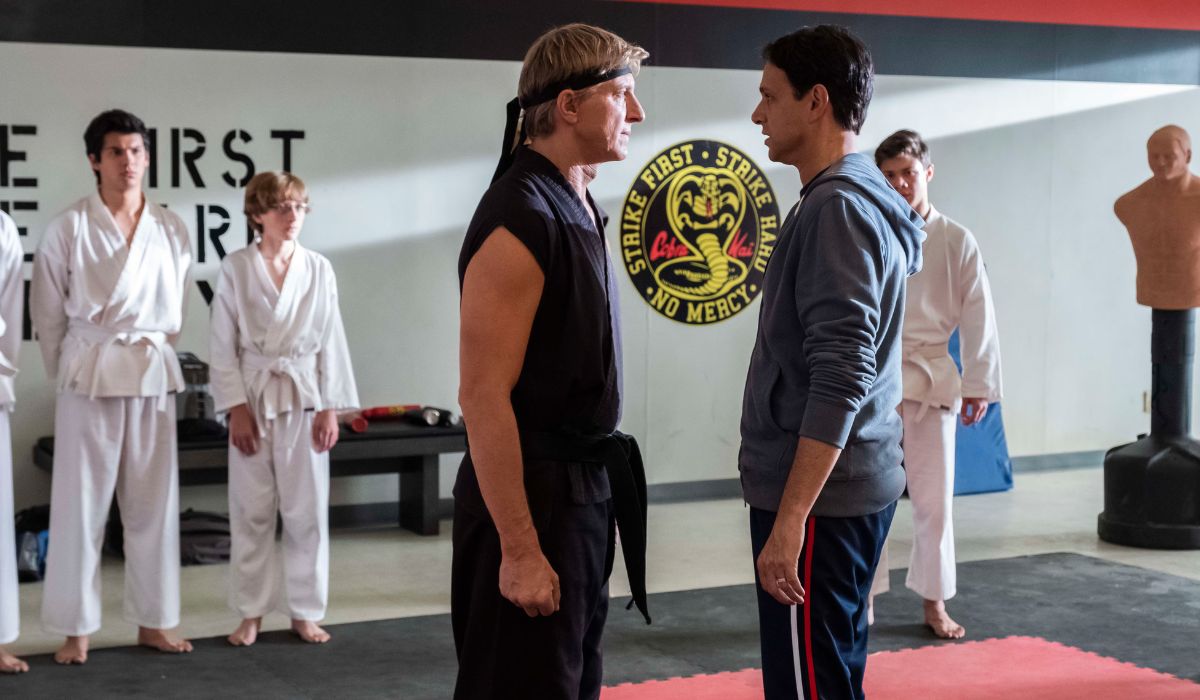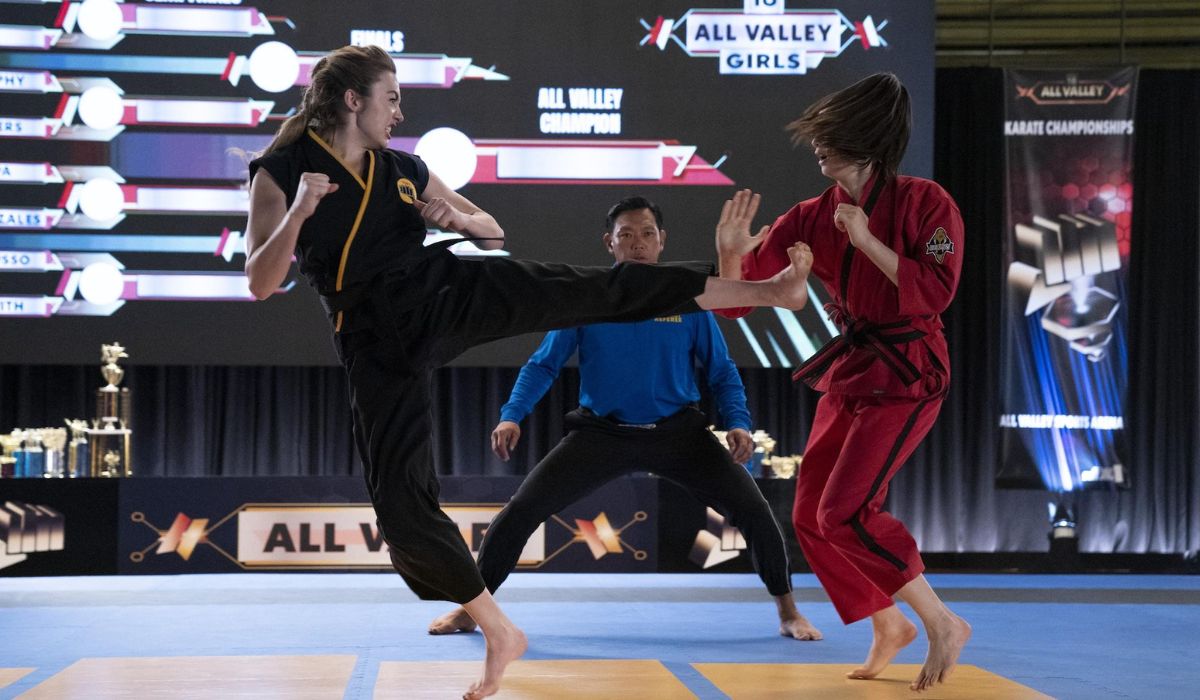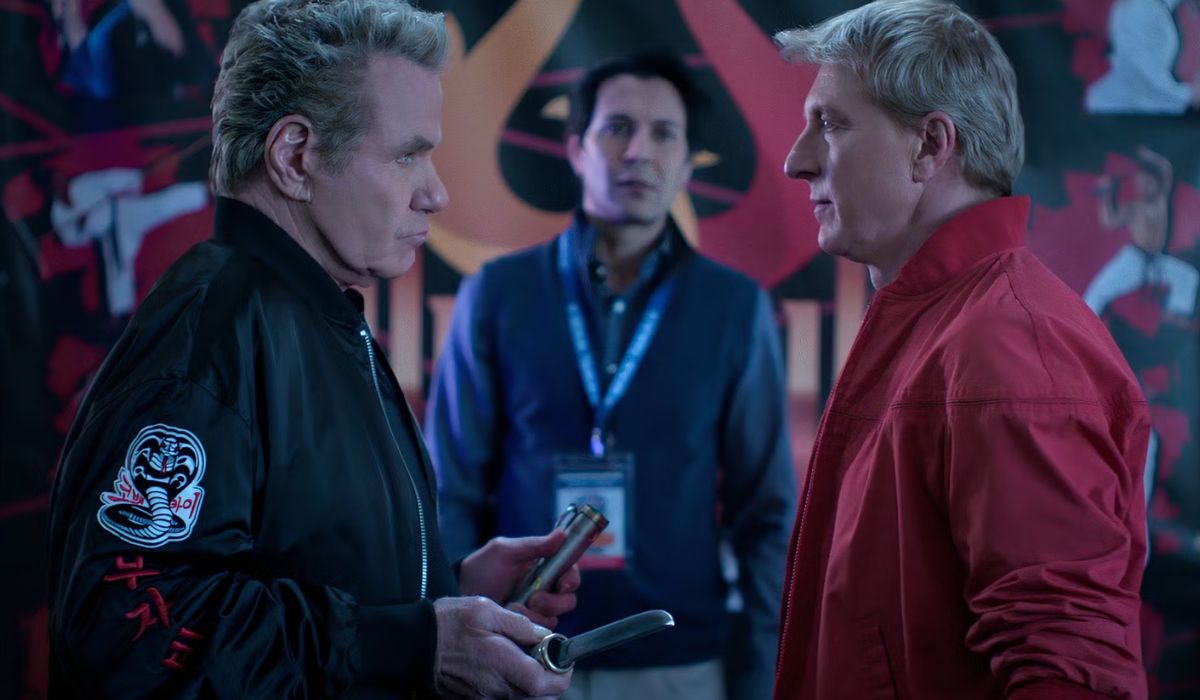
It’s been quite some time since Netflix produced a series that truly hit the mark. However, their decision to move Cobra Kai from YouTube Red was almost a stroke of genius. The show swiftly gained massive popularity, spanning six seasons and boasting a dedicated, fiercely loyal fanbase. What’s particularly noteworthy is that this spinoff originates from the classic ’80s franchise, The Karate Kid. Remaking an old story into a series can be challenging, but they managed it gracefully. Initially, when I watched it, I was taken aback by the depth and care put into the script to make it engaging for a new audience, particularly younger viewers.
If you’re not already acquainted with the source material, getting into spinoffs can sometimes be challenging. For instance, many people find it difficult to follow the Marvel Cinematic Universe (MCU) as it requires watching multiple films to keep up with the superhero world. However, shows like ‘Cobra Kai’ have masterfully addressed this issue by providing an introduction that caters to both newcomers and long-time fans. They seem dedicated to attracting a fresh audience, and they achieve this effectively from the outset by offering a comprehensive yet well-balanced overview of their universe.

A significant achievement was their successful revival of karate, making it appealing to a modern audience (since karate is an old martial art that doesn’t always get the recognition it deserves). They executed this exceptionally well by portraying the intensity and philosophical aspects of karate through captivating fight sequences, while also connecting it to the characters’ personal struggles. From the opening scene in Season 1 where Miguel fights bullies at school, it immediately captures attention – particularly among younger viewers, as engaging them can be quite challenging these days.
In addition to preserving its original essence, “Cobra Kai” cleverly modernizes itself without appearing outdated. Technology is significantly incorporated, and the romantic subplots from the initial trilogy are revived, offering a new perspective for contemporary audiences. The offspring of the original characters are involved in these romances, adding an exciting twist while maintaining the original cool factor. Furthermore, the female characters emerge as formidable fighters instead of mere supporters, reflecting the evolution of martial arts and society today. I found this decision to be particularly relevant, and the show does not disappoint in its execution – characters like Sam, Tory, Aisha, Devon, and even secondary character Zara, who stole the limelight, are testament to that.
Fundamentally, the battles in this series are not mere side attractions but form its very heart. Unlike a spin-off that often veers off with minimal links to the original, this show maintains a strong connection to its roots. The ’80s nostalgia is ever-present and significant for old-school fans. Training sessions, tournaments, and even resolutions of conflicts through fights are common elements. Moreover, it’s noteworthy that Mr. Miyagi continues to be honored and respected, underscoring the series’ commitment to preserving the spirit of “The Karate Kid.
From another perspective, some viewers might find the tempo monotonous; upon examination, each season appears to follow a similar main narrative arc. However, at times when it seems repetitive, the script cleverly introduces unexpected twists and turns, making you feel as if it’s reading your mind. Remarkably, Season 5 effectively addresses this issue by adopting a more mature theme and a storytelling style (most noticeable in the adult plotline) that offers a much more captivating viewing experience.
The strategy of separating the narrative into two distinct acts was insightful because while they share some similarities, each segment has its unique storyline. The grown-ups encounter their own issues, whereas the children have their own set of challenges. This approach facilitates in-depth character development and broadens the appeal since there’s content that caters to various tastes. Consequently, it becomes simpler for viewers to choose a preferred character, and it paves the way for future projects or spinoffs with fresh perspectives.

Discussing characters is captivating, given the intriguing narrative arcs they possess, especially since the show leaves many of them unresolved, offering ample opportunities to delve deeper. For instance, one wonders how Sam and Miguel’s bond will grow over time as they are separated, or where Tory and Robby might find themselves professionally. Imagine if Eli and Demetri’s Caltech journey included martial arts too! Daniel has a promising path ahead with Mr. Han, mentoring a new talent, but what lies in store for Johnny now that he’s realized his dreams? It would be intriguing to learn about Mr. Miyagi’s past and how it connects to the plot. Martin Kove hinted at a cut scene where John Kreese survived the yacht explosion – could this resurface in the future? And let’s not forget about Hilary Swank’s character, Julie Pierce; there are endless possibilities for her storyline as well, along with all the other secondary characters.
From a common perspective, some folks argue that the show Cobra Kai is excessively theatrical, over-the-top, and even preposterous at times. I concur with this assessment. However, it’s precisely this quality that makes it effective. It dares to be creative while staying within boundaries, but this eccentricity is deliberate. If you didn’t grasp this, perhaps you need to rewatch it. Nowadays, remakes and revivals of old franchises are abundant, but a strong script (and one that’s particularly clever) is essential to prevent it from appearing as a mere money-making venture.
What sets Cobra Kai apart is its focus on developing the previously secondary character and antagonist from The Karate Kid, Johnny, rather than delving into Daniel’s seemingly perfect life. From the get-go, we see Johnny as a struggling, outdated individual who miraculously establishes a dojo and swiftly gathers students. This setup in an otherwise fantastical world demonstrates a keen attention to character development, steering clear of easy narrative shortcuts like expository dialogue. This thoughtful approach to storytelling indicates that the show’s exaggerated style is intentional rather than a sign of neglecting the narrative’s substance. Remarkably, this strategy proved incredibly effective.

Personally speaking, what I truly cherish about this series is the intricate balance between setups and payoffs – they’re like the cream on top. Moments reminiscent of The Karate Kid are cleverly sprinkled in, serving to reinforce plot points or offer a nostalgic nod to older viewers while providing context for newcomers. Moreover, lessons learned years ago often resurface as valuable teachings, effectively shaping character developments.
A prime example of this is evident in the last season when Johnny, during the climactic fight at Sekai Taikai, echoes Kreese’s iconic “sweep the leg” move from the 1984 film. This unexpected nod to the past, coupled with his newfound understanding of Daniel’s teachings on patience in combat – demonstrated by his restraint before striking Sensei Wolf – truly encapsulates what makes Cobra Kai one of today’s finest shows.
As for the finales, Season 6 may not have been the best among its predecessors, but the conclusion was extraordinary in delivering Johnny’s long-awaited moment of triumph following his well-crafted development and awe-inspiring redemption journey. In essence, the show doesn’t merely continue the Karate Kid saga; it broadens it with innovative twists that are exhilarating, fitting, and most crucially, heartfelt. Its influence transcends nostalgia, underscoring that a well-crafted tale, told with dedication and emotion, can truly endure the test of time. Consequently, it becomes increasingly clear that Cobra Kai is far from over.
Cobra Kai is available to stream on Netflix.
Read More
- Gold Rate Forecast
- PI PREDICTION. PI cryptocurrency
- SteelSeries reveals new Arctis Nova 3 Wireless headset series for Xbox, PlayStation, Nintendo Switch, and PC
- Masters Toronto 2025: Everything You Need to Know
- WCT PREDICTION. WCT cryptocurrency
- Guide: 18 PS5, PS4 Games You Should Buy in PS Store’s Extended Play Sale
- LPT PREDICTION. LPT cryptocurrency
- Elden Ring Nightreign Recluse guide and abilities explained
- Solo Leveling Arise Tawata Kanae Guide
- Despite Bitcoin’s $64K surprise, some major concerns persist
2025-02-23 19:10